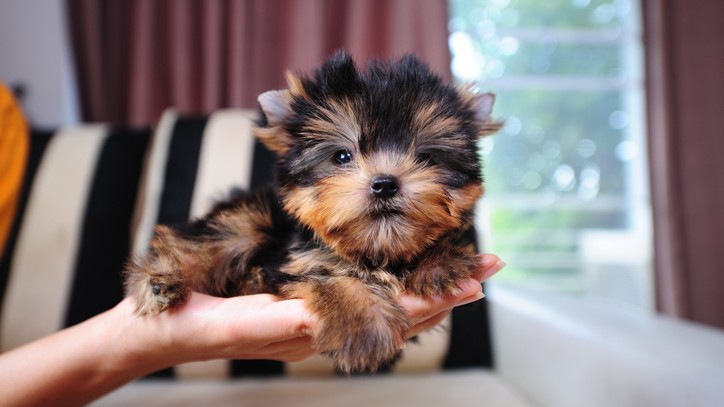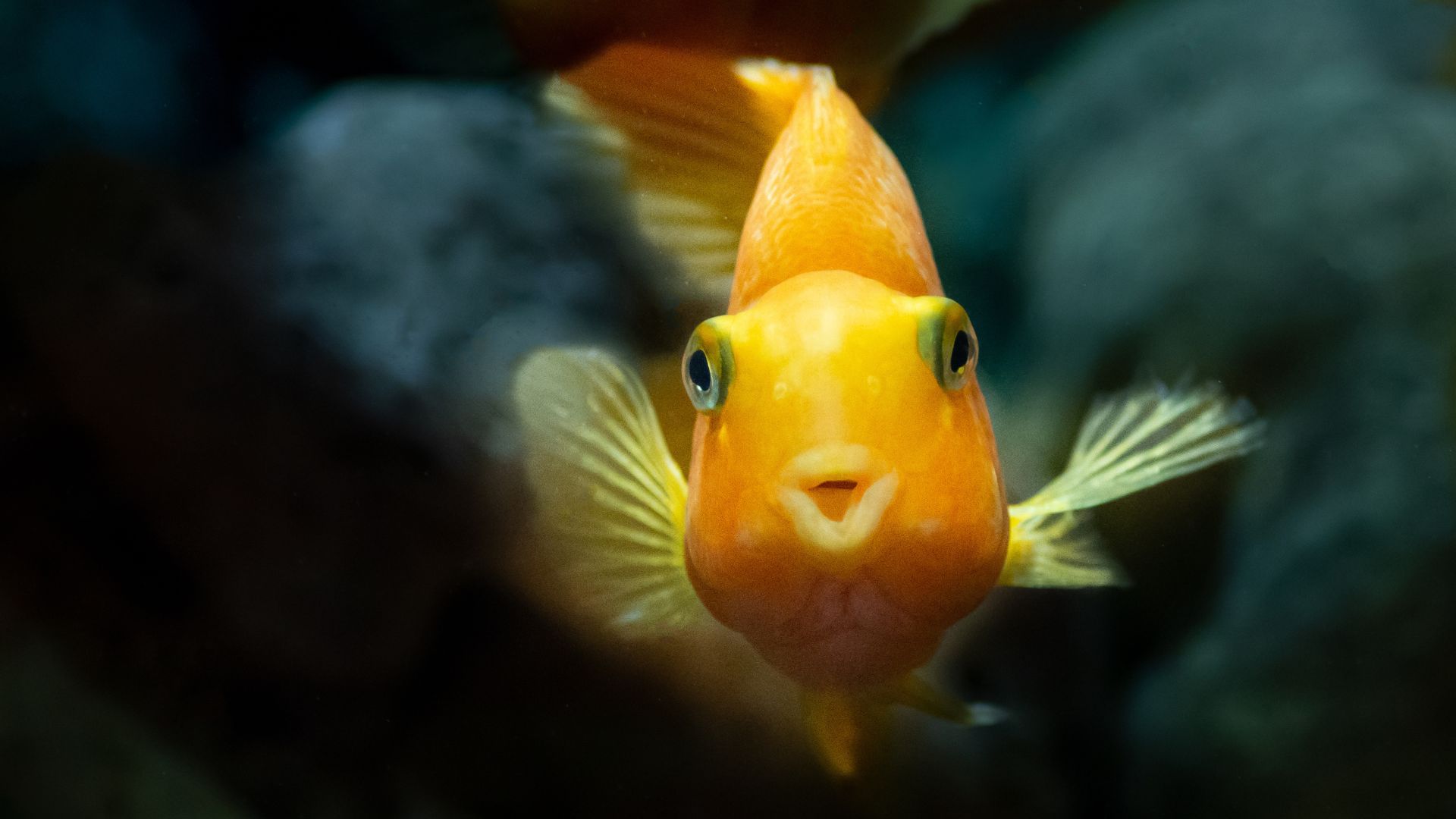Teacup puppies: A vet's view on breeding practices and health issues
Teacup puppies can be adorable, but they have unique needs and medical concerns

Teacup puppies tend to attract a lot of attention, with their tiny little bodies and big puppy eyes. If you’ve been thinking of adding a teacup puppy to your family, you’re in good company! These puppies have become increasingly popular in recent years, with breeders scrambling to meet the demand for these pint-sized pups.
Caring for a teacup puppy, however, requires more than just feeding the best puppy food. Teacup puppies have unique medical requirements, and they are more prone to develop certain serious health conditions. Read on to learn more about teacup puppies, and determine whether one of these puppies might be a good addition to your family.
What is a teacup dog?
The phrase “teacup dog” is used to describe miniature versions of many different dog breeds. Teacup dogs are not separate breeds; instead, they are the outcome of a breeder trying to create the smallest possible representatives of a breed.
Yorkshire Terriers, Chihuahuas, Maltese, Poodles, and Pomeranians are commonly sold in a teacup version, though breeders may occasionally create teacup puppies of other breeds.
How big do teacup dogs get?
There’s no definitive size cutoff for teacup dogs. The term “teacup” is purely subjective and doesn’t have a specific definition. Most people expect teacup dogs to be around two to five pounds at adulthood, but this can vary based upon the dog’s breed.
Also, it’s important to keep in mind that a puppy’s adult size can’t always be predicted accurately. A breeder selling a teacup Maltese, for example, suspects that the dog will be smaller than an average Maltese at adulthood, but there is absolutely no way to guarantee that. Just like tiny newborn humans can hit a growth spurt and become tall adults, and two short parents can produce a tall child, genetics are complex and it isn’t always possible to predict a dog’s adult size. A teacup Maltese is expected to reach an adult size of two to four pounds, but it’s also possible that he may be eight pounds, like a typical Maltese.

Teacup puppies breeding practices
Many dog owners want tiny puppies, and breeders are more than happy to breed what their customers want. Unfortunately, this breeding is often done with little regard for the health of the puppies.
In an effort to create ever-smaller teacup puppies, breeders aim to breed the smallest dogs from each of their litters. Have you ever heard the term “runt?” These puppies, which were once seen as less desirable and less healthy, are exactly what the breeder is looking for when trying to create teacup puppies. Breeding the runts from two different litters is likely to create puppies that are small in size, but may have other unintended consequences.
Some breeders further try to reduce the size of their puppies by limiting their nutrition at an early age. Malnutrition can stunt puppies’ growth, leading them to remain small instead of reaching the size of a healthy adult.
When purchasing a puppy, it’s important to look for a responsible breeder who places puppy health over profits. Responsible breeders will want to meet in person before you purchase a puppy, screening you as an owner and allowing you to visit their breeding facility and meet your puppy’s parents. Their breeding dogs will have undergone recommended health testing for their breed, such as hip x-rays, an echocardiogram (heart ultrasound), or other breed-specific tests recommended by the Orthopedic Foundation for Animals and/or American Kennel Club Parent Breed Clubs. Puppies will have received all recommended medical care prior to coming home with you, including a fecal parasite exam, deworming, and their first set of vaccines. These indicators suggest that you are purchasing from a responsible breeder. If you are purchasing a dog from a pet store or online, you can almost guarantee that you are not working with a responsible breeder. For more information, read how to differentiate a puppy farm from a reputable breeder.
Teacup puppies health problems
Teacup puppies are prone to a number of health conditions. It’s important to be aware of these risks, so you know what to watch for in your puppy’s early months.
The most common health issue in young teacup puppies is hypoglycemia, or low blood sugar. Teacup puppies don’t have significant energy reserves to draw from, due to their small size, and going just six or eight hours without food can cause life-threatening hypoglycemia. These puppies need to be fed an energy-rich, highly-digestible puppy food every four to six hours. They may require canned food, because their mouths and teeth are often not adequately developed to handle dry food. In addition to feeding the best puppy food for small breeds in small, frequent meals, watch your puppy closely for signs of lethargy or weakness. Lethargy and weakness can indicate hypoglycemia, which is a medical emergency. If you suspect your puppy may be suffering from hyperglycemia, seek immediate emergency care from your veterinarian or a veterinary emergency hospital.
Liver shunts are also a common problem in teacup puppies. In a dog with a liver shunt, abnormal blood vessel development within the liver inhibits the liver’s abilities to remove toxins from the bloodstream. Affected dogs have stunted growth (explaining its link to teacup puppies), and they may exhibit neurologic abnormalities such as circling, disorientation, and seizures. Some cases can be treated with surgery, while others require lifelong medical management.
Other conditions to watch for in teacup puppies include heart disease, hydrocephalus (fluid on the brain), and digestive disorders. Also, be aware that these puppies are more prone to bone fractures, due to the small size of their bones.
In general, a teacup puppy can be expected to have more medical needs than an average dog.
- How much should I feed my puppy? A vet answers...
Conclusion: Should you get a teacup puppy?
Only you can determine whether a teacup puppy is the right fit for your family. While these micro pups are adorable, they require extra care and attention that can be time-consuming and expensive. Weigh these trade-offs in order to make an educated decision about whether a teacup puppy is the best fit for your family.
PetsRadar Newsletter
Get the best advice, tips and top tech for your beloved Pets
Dr. Barnette is a graduate of the University of Florida, where she received both her B.S. in Zoology and her Doctor of Veterinary Medicine (DVM). She has 15 years of clinical experience as a small animal veterinarian, treating dogs, cats, and occasional exotic patients. She now works as a freelance veterinary writer, creating educational content for veterinarians, veterinary team members, and dedicated pet owners. Dr. Barnette lives in southwest Florida with her husband and daughter (plus two cats, a dog, and a rescued dove!) and enjoys kayaking, biking, and hiking. Learn more about Dr. Barnette at www.linkedin.com/in/catherinebarnette.

